San Antonio, TX Pollen and Allergy Report for Summer 2023
Pollen Allergy Trends in San Antonio, TX
When is pollen lowest in San Antonio, TX?

February
Lowest month total PPM
Avg. PPM
When is pollen highest in San Antonio, TX?

March
Highest month total PPM
Avg. PPM
How does pollen in San Antonio, TX compare to Texas?
San Antonio has a higher average PPM than the state of Texas.
San Antonio yearly avg PPM:
Texas yearly avg PPM:
How does pollen in San Antonio, TX compare to the USA?
San Antonio has a higher average PPM than the USA.
San Antonio yearly avg PPM:
USA yearly avg PPM:
Is pollen worse this year in San Antonio, TX?
Spring 2023 was worse than spring 2022.
Spring 2023 PPM:
Spring 2022 PPM:
Average PPM in San Antonio, TX
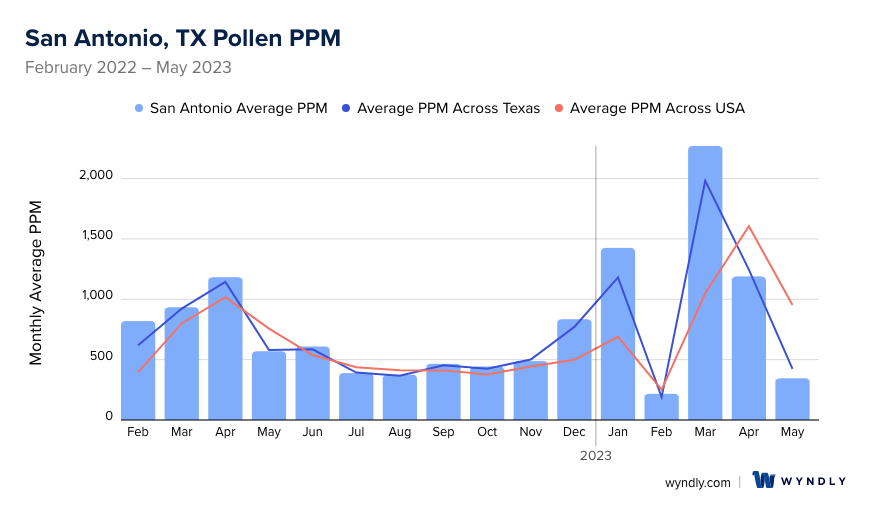
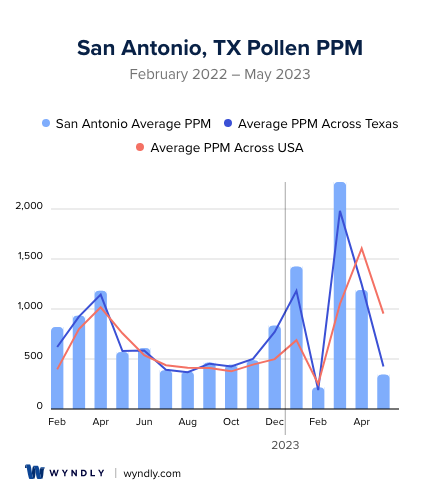
San Antonio, TX Pollen and Allergy Breakdown by Month
Grass
When is grass pollen highest in San Antonio, TX?
February has the highest grass pollen in San Antonio, TX with an average PPM of
When is grass pollen lowest in San Antonio, TX?
December has the lowest grass pollen in San Antonio, TX with an average PPM of
Tree
When is tree pollen highest in San Antonio, TX?
March has the highest tree pollen in San Antonio, TX with an average PPM of
When is tree pollen lowest in San Antonio, TX?
July has the lowest tree pollen in San Antonio, TX with an average PPM of
Weed
When is weed pollen highest in San Antonio, TX?
December has the highest weed pollen in San Antonio, TX with an average PPM of
When is weed pollen lowest in San Antonio, TX?
February has the lowest weed pollen in San Antonio, TX with an average PPM of
San Antonio, TX Pollen Monthly Breakdown by Pollen Type
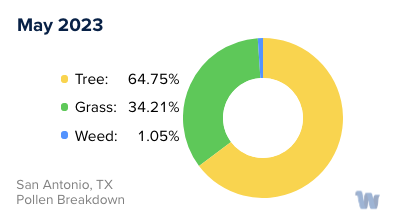
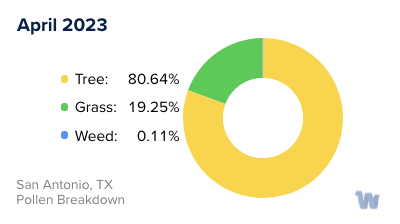
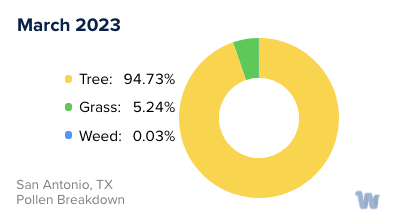
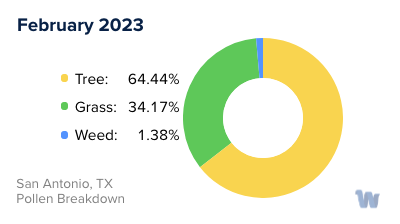
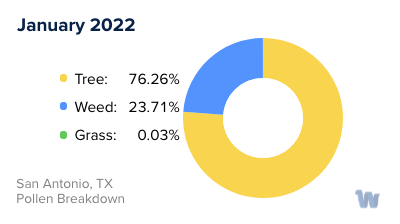

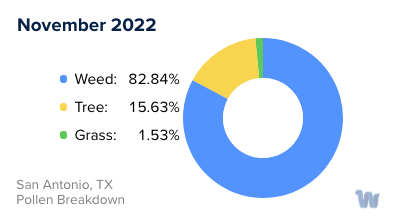



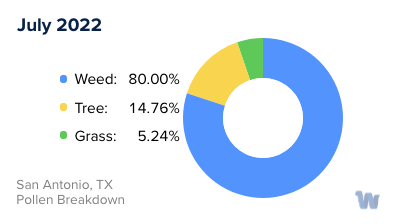
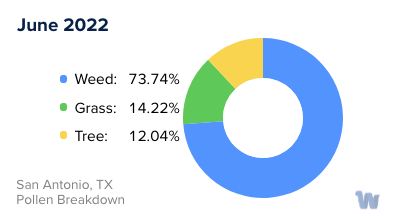

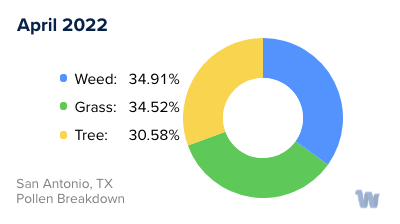
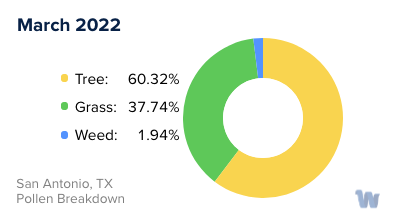
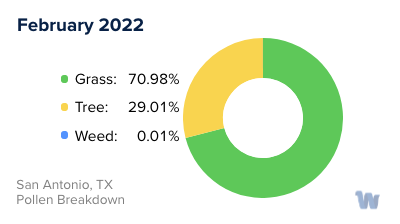
Pollen and Hay Fever in San Antonio, TX
In the vibrant city of San Antonio, Texas, the changing of the seasons often comes with the familiar symptoms of pollen allergies, also known as hay fever. While these allergies are a common occurrence for many, understanding the types of pollen and the seasons can help individuals anticipate and navigate through this often challenging time of the year.
San Antonio, with its diverse vegetation, experiences different types of pollen throughout the year. Oak, cedar, and ragweed are the primary contributors to pollen allergies in the city.
Oak pollen, most abundant in the spring, often turns cars and sidewalks a dusty yellow. This pollen is particularly potent, causing sneezing, itchy eyes, and other discomforts to those with sensitivities. The oak trees in San Antonio, from the majestic live oaks to the towering red oaks, are the major culprits during this season.
In contrast, Mountain Cedar, despite its name, is actually a type of juniper. This tree sheds its pollen in the winter months, typically from December through February. Its pollen grains, though fewer in number compared to oak, are just as troublesome to allergy sufferers. The airborne cedar pollen often triggers an allergic response, leading to what locals call "cedar fever.",Lastly, ragweed, a common plant across North America, releases its pollen in the late summer and early fall. It's a significant contributor to hay fever symptoms. Despite each plant being small and unassuming, a single ragweed plant can produce up to a billion grains of pollen each season, filling the air with potential allergens.
The unique blend of vegetation in San Antonio creates a year-round pollen season, with different plants taking center stage at different times. Understanding the types of pollen and their respective seasons can provide a sense of control in dealing with pollen allergies. Though it doesn't offer a solution, it allows individuals to anticipate and prepare for the challenges ahead.


